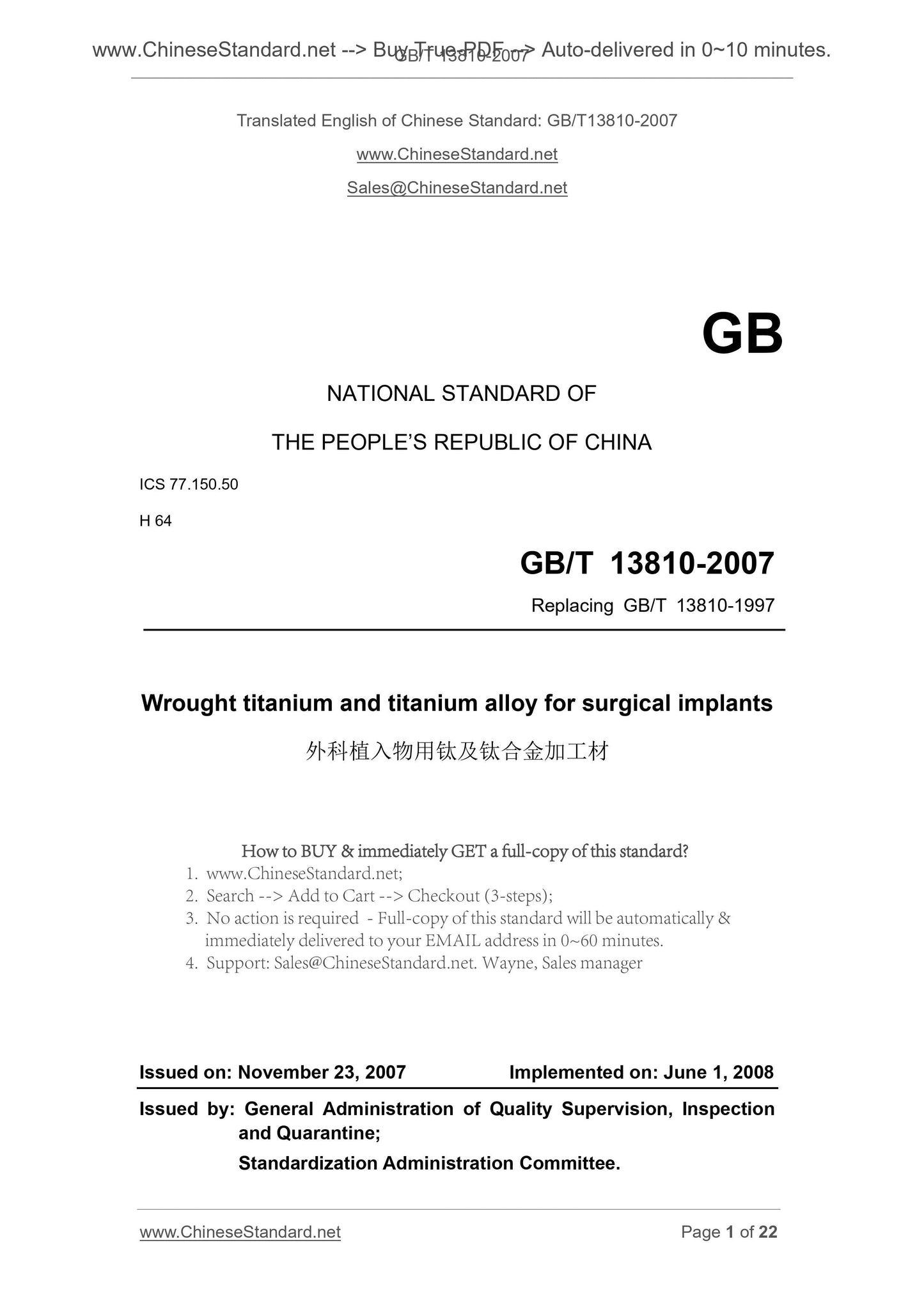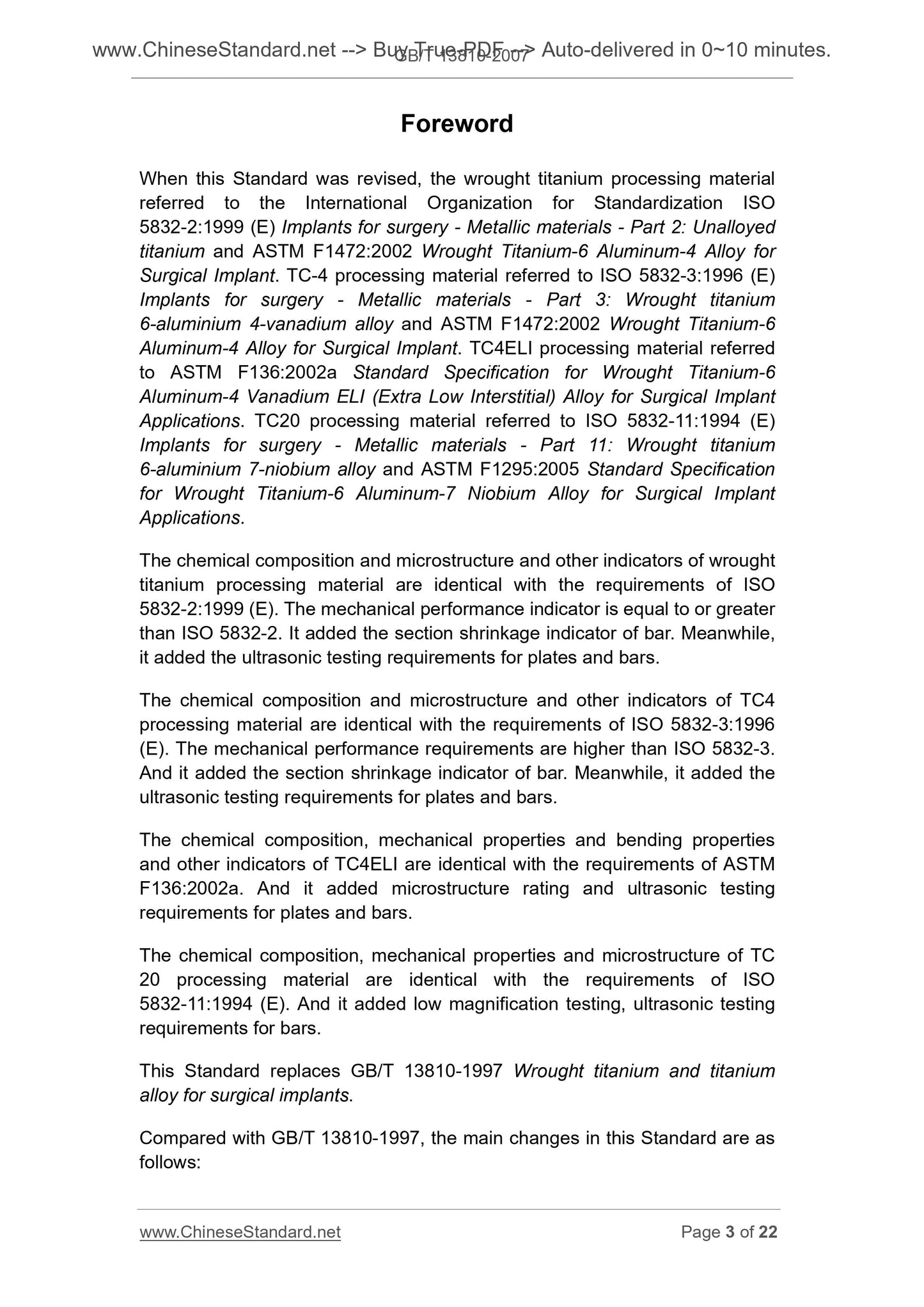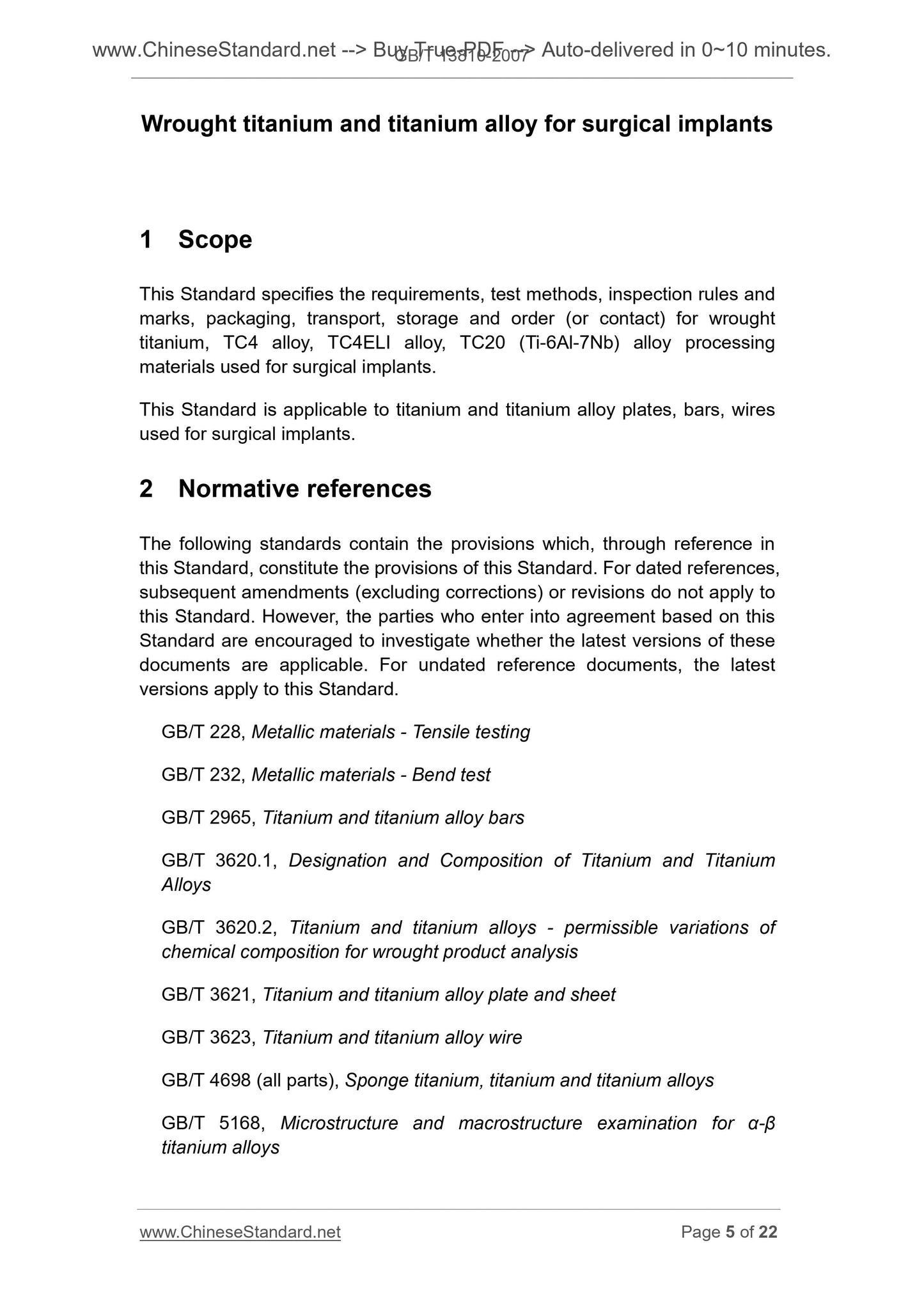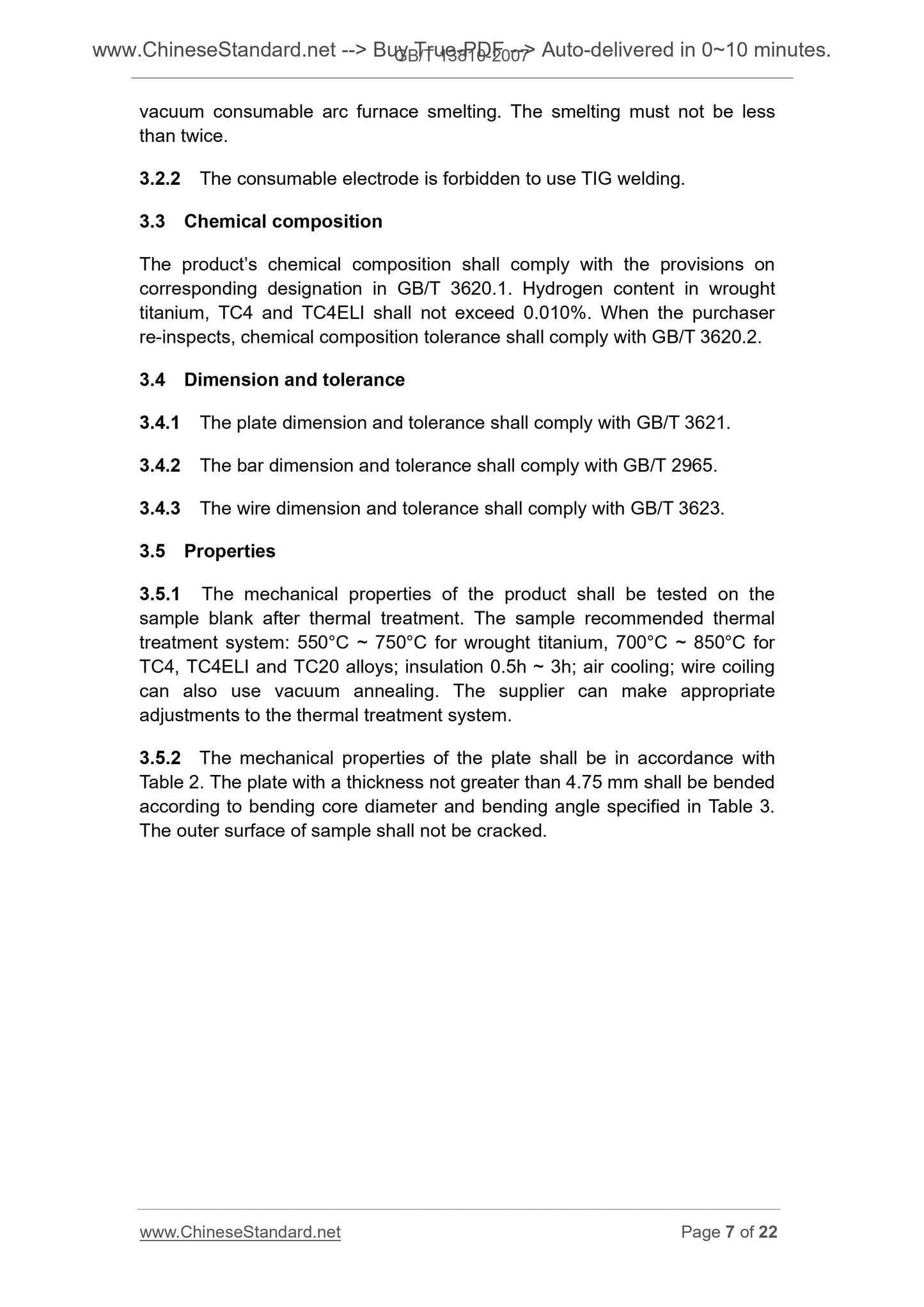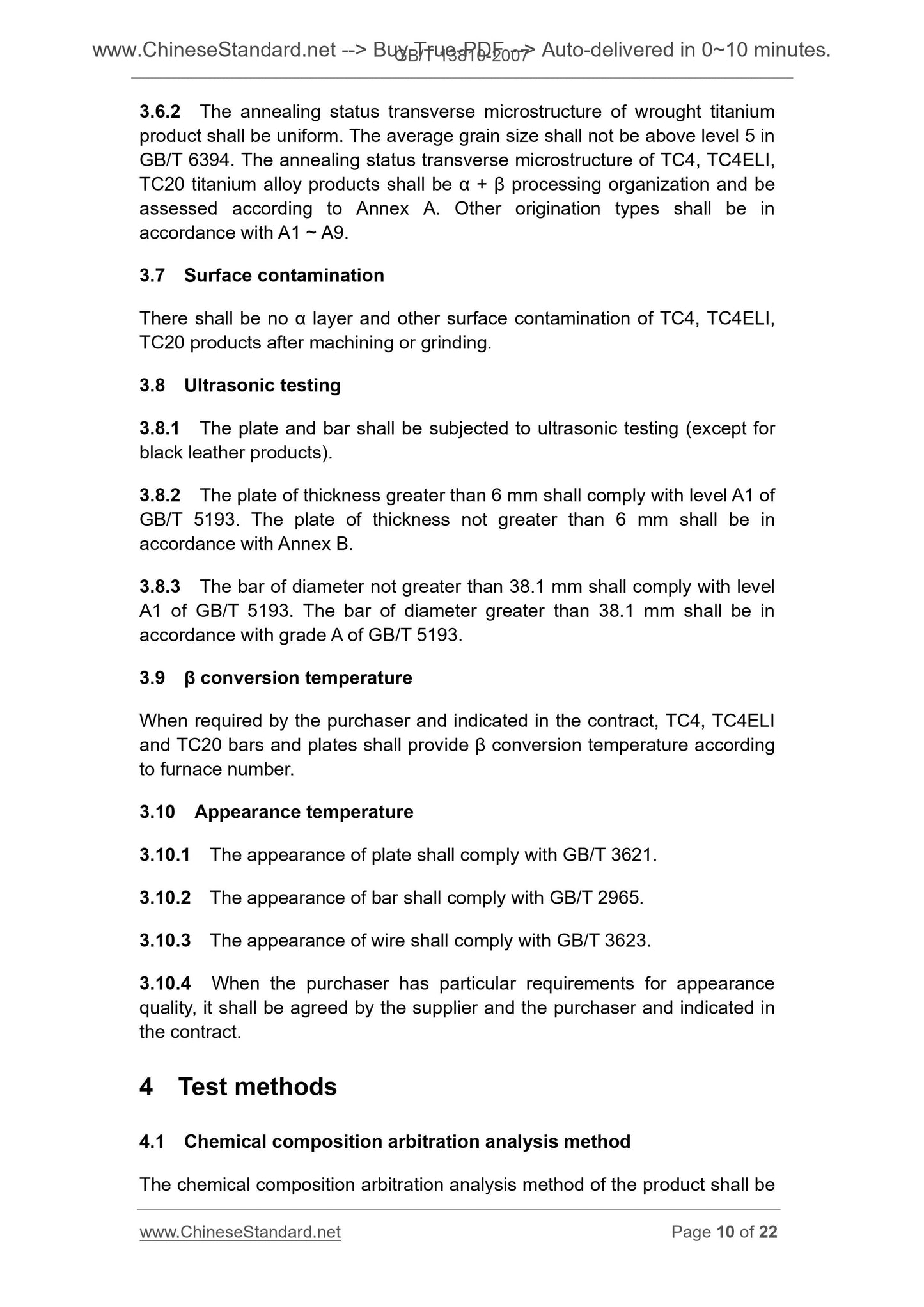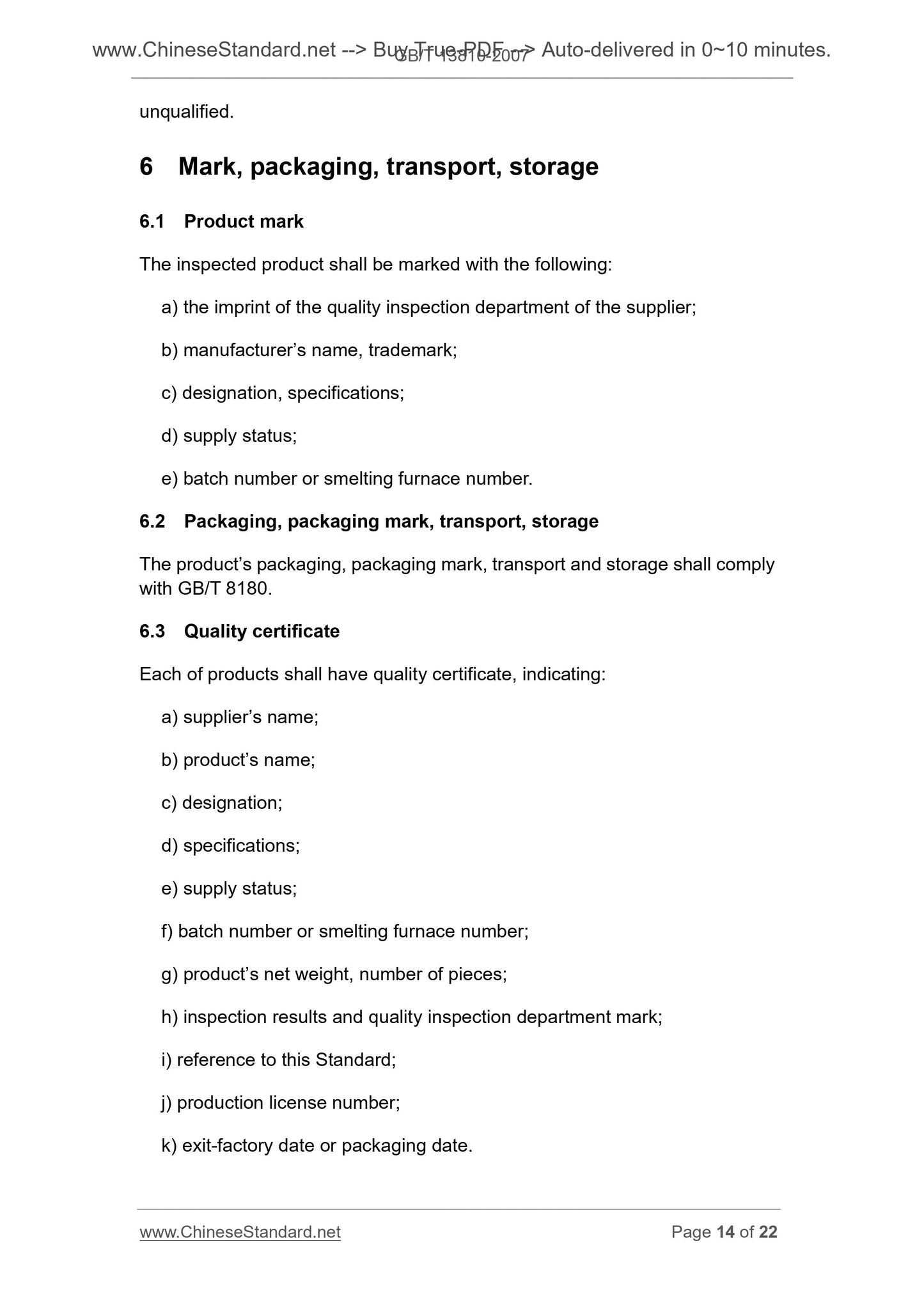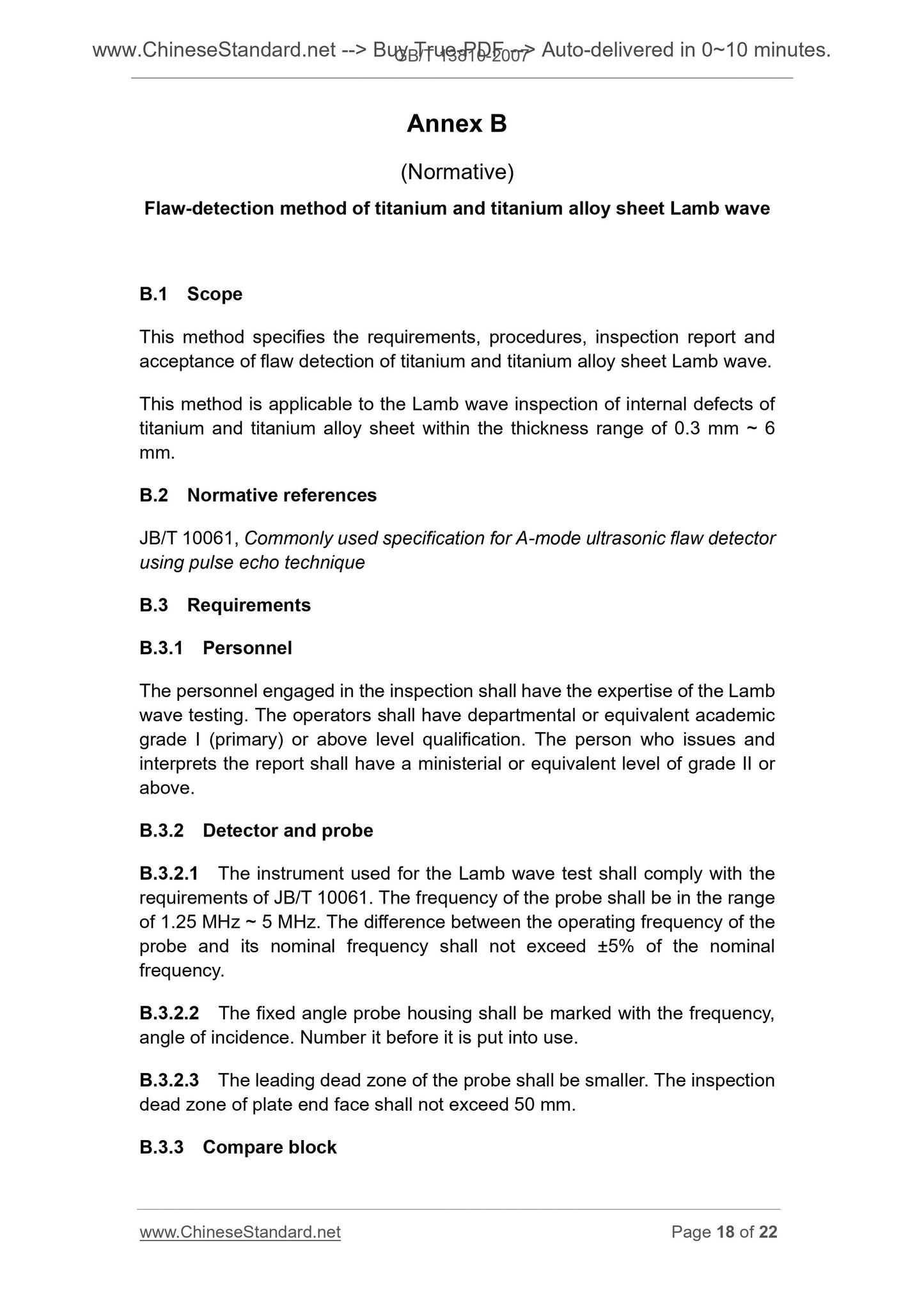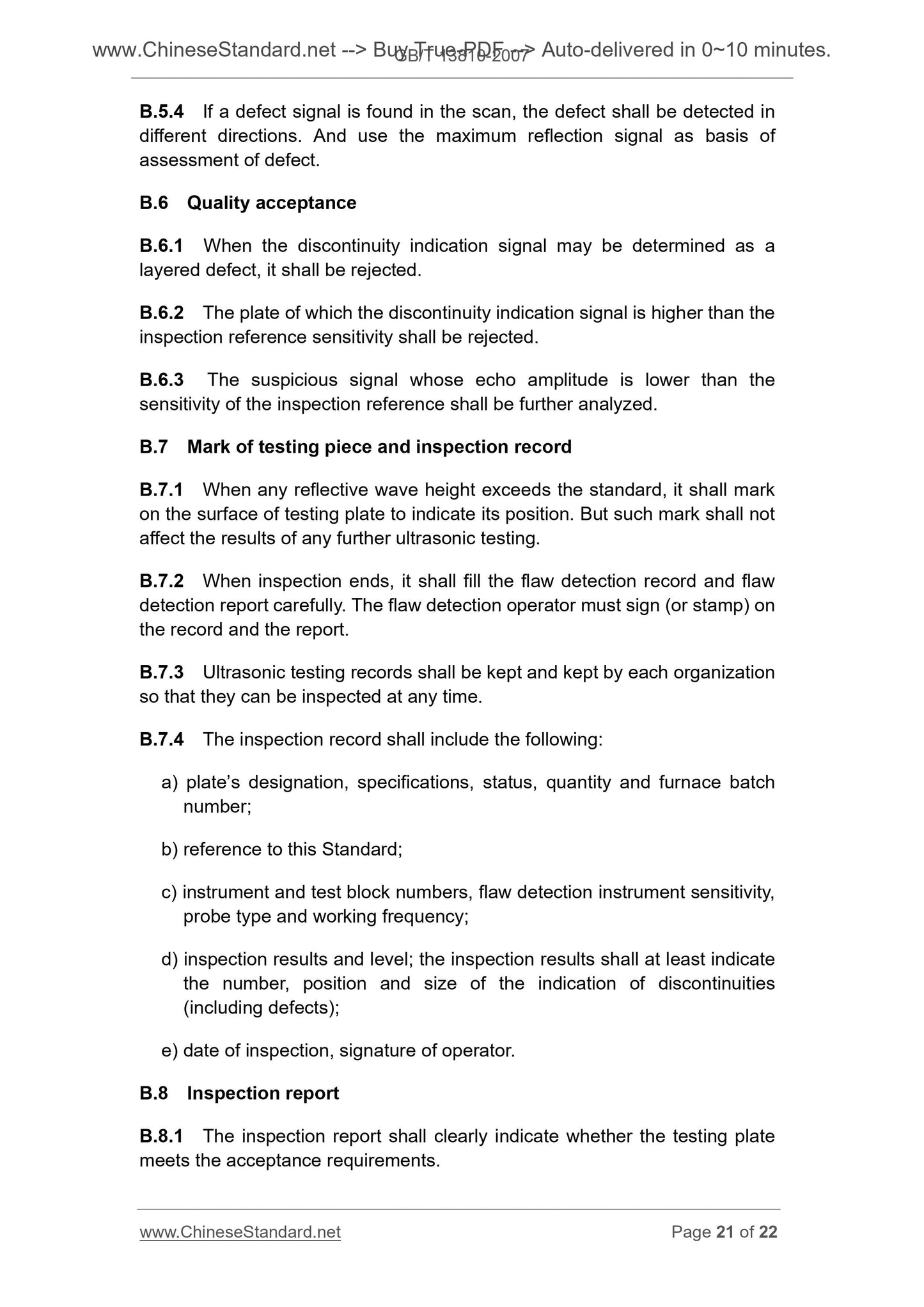1
/
of
9
PayPal, credit cards. Download editable-PDF and invoice in 1 second!
GB/T 13810-2007 English PDF (GB/T13810-2007)
GB/T 13810-2007 English PDF (GB/T13810-2007)
Regular price
$70.00
Regular price
Sale price
$70.00
Unit price
/
per
Shipping calculated at checkout.
Couldn't load pickup availability
GB/T 13810-2007: Wrought titanium and titanium alloy for surgical implants
Delivery: 9 seconds. Download (and Email) true-PDF + Invoice.Get Quotation: Click GB/T 13810-2007 (Self-service in 1-minute)
Newer / historical versions: GB/T 13810-2007
Preview True-PDF
Scope
This Standard specifies the requirements, test methods, inspection rules andmarks, packaging, transport, storage and order (or contact) for wrought
titanium, TC4 alloy, TC4ELI alloy, TC20 (Ti-6Al-7Nb) alloy processing
materials used for surgical implants.
This Standard is applicable to titanium and titanium alloy plates, bars, wires
used for surgical implants.
Basic Data
| Standard ID | GB/T 13810-2007 (GB/T13810-2007) |
| Description (Translated English) | Wrought titanium and titanium alloy for surgical implants |
| Sector / Industry | National Standard (Recommended) |
| Classification of Chinese Standard | H64 |
| Classification of International Standard | 77.150.50 |
| Word Count Estimation | 14,129 |
| Date of Issue | 2007-11-23 |
| Date of Implementation | 2008-06-01 |
| Older Standard (superseded by this standard) | GB/T 13810-1997 |
| Adopted Standard | ISO 5832-2-1999 (E), NEQ; ASTM F67-2006a, NEQ @ ISO 5832-3-1996 (E), NEQ; ASTM F1472-2002, NEQ |
| Regulation (derived from) | China National Standard Approval Announcement2007 No.12 (Total No.112) |
| Issuing agency(ies) | General Administration of Quality Supervision, Inspection and Quarantine of the People's Republic of China, Standardization Administration of the People's Republic of China |
| Summary | This standard specifies the surgical implant of titanium and titanium alloy requirements, test methods, inspection rules and signs, storage and order form content, transport, packaging. This standard applies to the manufacture of titanium and titanium plates used in surgical implants, rods, wire. |
Share
